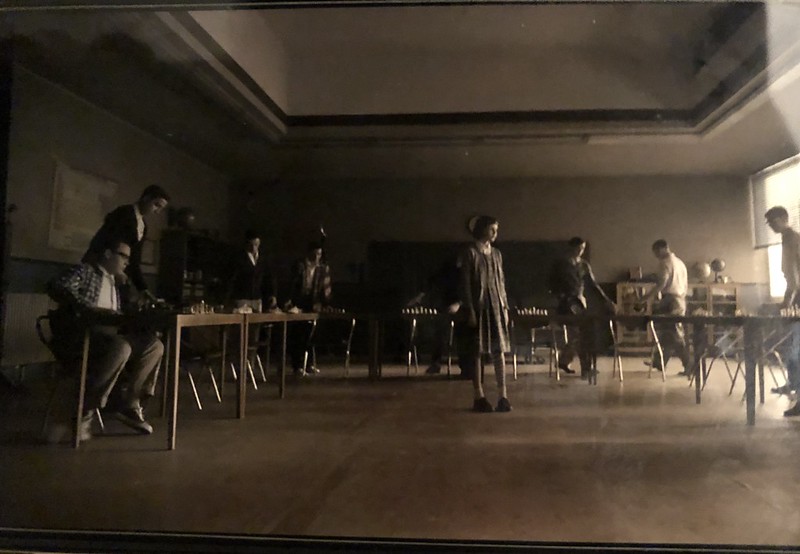“THE QUEEN’S GAMBIT” & ITS CLICHÉS

It’s mostly ordinary and it’s a simple story
By now, most people have heard or considered watching The Queen’s Gambit, and for good reason. The show is one of Netflix’s most viewed series in 2020 and raved about on most social media platforms. It has all the elements of feel-good TV: weirdness, nostalgia, and most importantly it’s a great distraction.
Anya Taylor-Joy stars as Beth Harmon, a precocious chess player with a strategic mind, enough to intimidate senior chess players in the 1960s. It’s a simple and appealing story that really takes on the idea that anything can be made interesting. And it’s true!
Beth is very intriguing and has a natural way of drawing people to her, purely because of her untameable confidence. Some of it might be because of her mother’s (Chloe Pirrie) steadfast determination in affording her life lessons early on. But also, it was because she had a strong self-image that carried her through the roughest of times—especially since her somber moments are plentiful.
The series has a very comic book feel to it. Everything about Beth is dramatized even when it’s not necessary. Beth is a girl who plays chess (what?!), and she dresses well (no?!), and she beat not one, but many men in a game of chess (wow, no way?!).
Just as well, her sad background origin is also amplified and made a performance. So, like other superheroine origin stories, Beth’s life is rooted in a muddled history of trauma and loneliness.
Throughout the show, there are several flashbacks to her dark past. Her mother, Alice, seemed to be experiencing a mental health crisis during the prominent moments of her childhood and it had grave consequences. At just nine-years-old, young Beth (Isla Johnston) was made an orphan after Alice committed suicide by driving into incoming traffic, with her in the car. It’s quite dark. But as typical of super hero narratives, Beth never seems to gain help for this trauma. Instead, she’s readjusted into orphanage life with a bit of platitudes to comfort her.
“I know that, at this moment, all you’re feeling is loss. But after grief brings you low, prayer and faith will lift you high,” offered Ms. Deardorff, the orphanage director (Christiane Seidel).
The interesting thing is, quite a bit of the show has an eerie feel because of the strange air of control from Ms. Deardorff (and also from within the orphanage). But mostly nothing happens, save, for a chance meeting with Mr. Shaibel (Bill Camp). A janitor with an abundance of patience, Shaibel is generous with his skill with chess and takes time to teach her the game. He recognized her promise early on and helped in her education and then her career.
Of course, along the way, Beth develops a drug addiction since psychologists of that time believed that children should be put on sedatives to keep calm. But her life wasn’t so bleak during her term at the orphanage. She found a good friend in an older kid called Jolene (Moses Ingram), before getting adopted by Alma Wheatley (Marielle Heller) and Allston Wheatley (Patrick Kennedy).
Following her adoption, her life is mostly one filled with freedom and expression after her adoptive father Allston abandons their little family. Since Alma is as eccentric as her new daughter, Beth gains free rein in her life through a budding chess career with the security of knowing that she could essentially be whomever she wanted to be with Alma by her side.
Obviously now, the show wouldn’t be so intriguing if her life was so prime and rosy so there’s dashes of suffering thrown in. Alma dies and Beth hits a stride with chess and then falters to an addiction with drugs and alcohol for a bit but then is rejuvenated and made stronger for her ultimate and greatest chess foe: The Russian (Marcin Dorocinski).
The Queen’s Gambit has traces of the spectacular bits of Black Swan and Whiplash but lacks their potential. In common, there’s a fine attention to the narratives of these lesser observed industries and their intricacies but unlike Black Swan or Whiplash, The Queen’s Gambit lacks the grit, depth, and the realism that would have matured it to be more affecting.
Instead, the show continuously teases questionable romantic relationships with men often twice her age during her teen years then eventually she meets Harry Beltik (Harry Melling), a more appropriately matched mate. Also, Beth spends all her time simply shopping and obsessing over chess and when she has a break down, it doesn’t feel familiar like it does in Black Swan or Whiplash. Her’s is distant, absurd, and arguably the paradigm of femininity as seen by men: Unlike any other during a crisis, Beth still manages to get on a dramatic eye, do her hair, put on makeup and dress stylishly as if she’d been performing the part of what she imagined a classy woman would look like during a breakdown. For instance, when Harry alerted her of her dangerous pattern, her reply to him feels stiff and trite but she says it with so much zeal in her expression, as if she were speaking poetry.
“What kind of help would that be?” she asks him. “Sounds more like you’re feeling a little sorry for me and I’m not the one that’s supposed to be in college, not working at a super market.”
Still, there is nothing especially wrong with The Queen’s Gambit besides the fact that Jolene is made to call white characters “cracker” with no logical context. It’s mostly ordinary, even immersive early on. It’s just that, the lacklustre ending and sprinkles of banality throughout cause the series to just slip from greatness. Yet, like Emily in Paris, its predictability is comforting and easy and just the kind of thing you might need to balm a dejected spirit.